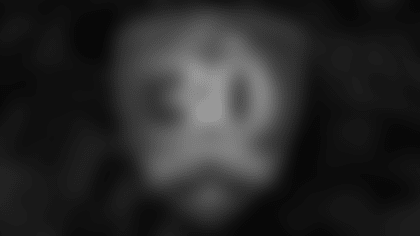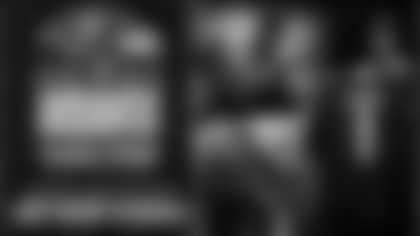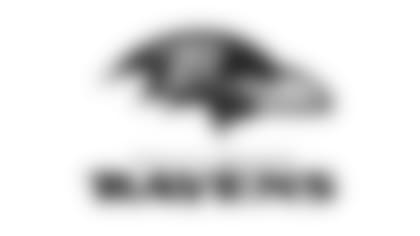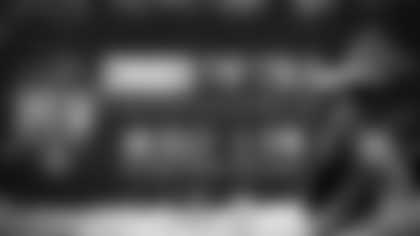DAVID MODELL
8/16/61 – 1/13/17
David Modell, 55, served as President of the Baltimore Ravens from the team's beginning in 1996, through the Super Bowl XXXV championship in 2000 and continued in that capacity until 2004. From the selection of the team name and colors, to the move to M&T Bank Stadium in 1998, to the hiring of Brian Billick, David coordinated the efforts as team president. His fingerprints are still present on many of what have become Ravens favorites and traditions.
In recent years, Modell helped direct Modell Ventures and served as chairman of 3ality Digital, a company that produces and provides 3D entertainment solutions. David served as executive producer for the critically-acclaimed and award-winning "U2 3D" concert movie, which showcased U2's performances through South America and Australia during the 2006 Vertigo Tour.
Modell also appeared weekly with syndicated radio host Armstrong Williams, while helping his wife Michel, an accomplished artist, raise their two-year-old twins, daughter "Fee" (Aoife) and son "Bertie" (Bertram). From his first marriage, David is the father of daughters, Breslin and Collier, and sons, Arthur and David Jr.
With the Ravens, Modell pointed to a clearly defined bottom line. "Our number one goal is to win. This oversimplification cannot be re-stated often enough. It shapes every decision and action this organization takes," Modell said early in his tenure. "I don't want us just to be the best football team. We aspire to be the best business organization. We want to set the standard on and off the field."
With consent and advice from his father Art Modell, David set and organized the structure for the franchise after the team arrived in Baltimore in 1996. "You have to have a vision and set realistic goals. Like a coach has to get the players in the right position to make plays, we aim to get the rest of our associates in the right spots to make us efficient and winning," Modell said. "You have to communicate effectively internally, as well as externally, and hold everyone accountable. Plus, we continue to embody my father's philosophy of being first class in every way and to have compassion in all we do. And, we try to have fun doing all of this."
David spearheaded the search for a new head coach after the '98 season and the subsequent hiring of Brian Billick. Modell organized a group of Ravens executives and detailed a profile of what the ideal head coach should be. The group then discussed and thoroughly researched approximately 50 possible candidates before focusing on Billick. "I was very impressed with David's approach, and he led the Ravens and me to Brian," Art Modell said after the 2000 championship.
David almost predicted the Ravens' Super Bowl XXXV victory. In an interview with NFL Films in the spring of 1999, Modell said: "How cool will it be to wake up in my house with the Super Bowl trophy next to my bed for a night? How cool will it be for others within the Ravens to do the same? How cool will it be for our fans to have that trophy in Baltimore?"
And the younger Modell was not selfish with the championship. The Ravens' Super Bowl trophy was touched by over 100,000 hands of fans before being placed in a trophy case. "We made sure that our fans knew that we understood that they are very much a part of our championship. Their support, their stadium and their investment in us are major factors to our winning. Sharing the trophy with them symbolized that union," Modell explained in 2001.
Modell believed in inclusion. "We try and make everyone in the organization understand that what they do is important to our success," Modell said. "At the same time, anything that involves the fans, we try to include the fans in the decision. Before we built the stadium, we asked our season ticket holders what was important to them at the new facility. We asked, listened, and then made sure we gave them what they wanted."
David coordinated the opening of M&T Bank Stadium in 1998, which included a three-day football festival in downtown Baltimore that attracted over 100,000 fans. Modell then coached his associates at the Ravens to create an atmosphere at the first home games that would give fans the impression "that we've been in the stadium for years." He hired J.D. Power and Associates to survey the fans at the first few home games to test the results. "We received high marks in everything from video boards, to ticket takers, to ingress and egress. It said a lot about our associates and the good people who work with us on gamedays." It also said a lot about Modell's ability to organize and motivate.
Both the Baltimore Magazine and Baltimore Business Journal saluted Modell. Baltimore Magazine picked him as one of "40 Leaders Under 40" in May of 2001, and he was selected by the Baltimore Business Journal (January of 2000) as one of "40 Under 40" leaders who help the Baltimore industry and the community in general. He received the Better Business Bureau of Greater Maryland's "Outstanding Achievement Award" in the fall of 2001.
When the team arrived in Baltimore in 1996, David coordinated a fan vote through The Baltimore Sun to select the team nickname – the Ravens. Working with staff, NFL Properties and Baltimore-area focus groups, he directed the process to select the team colors and uniform design. "It was a collaborative effort. The fans got involved, my family, obviously Art, plus many members of the organization." In 1999, David once again involved the fans in the vote for a new Ravens' logo.
No person in the Ravens organization had more hands-on experience in as many different areas of the franchise than did David. Starting with the Cleveland Browns in Cleveland Stadium and gameday operations when he was 14, he worked in every phase of the team except playing and coaching. He helped in the team's ticket office, public relations department and started the marketing division, a first for an NFL team. David also served on the NFL's Stadium and Expansion Committees.
David made his first mark in Cleveland and in league circles with the work he did marketing the Browns. The younger Modell developed a series of programs that enhanced the team's image and provided needed revenues. Other teams have copied some of David's innovations, including team television productions (weekly shows and preseason games produced by the team rather than selling those rights), an elaborate training camp magazine that was distributed to fans, and advertising "moments of exclusivity" at home games. The team's original television ventures were both produced and sold by Modell.
Modell, who received the Ed Block Courage Award for Courage, Compassion, Commitment and Community in 2002, was an active member of five Baltimore boards of directors: the United Way of Central Maryland, the Port Discovery Children's Museum, Father Martin's Ashley, the University of Maryland Medical System's Shock Trauma and the Maryland Public Television Foundation. David was also the chairman of the Ravens Foundation for Families.
In Cleveland, Modell was president of the Diabetes Association of Greater Cleveland, and he headed its development fundraising. He was a member of the Board of Trustees for the Cleveland Urban League and the Convention and Visitors Bureau. Modell also worked with the Lake County Boy Scouts Association and served on the Visiting Committee of the Athletic Department at Case Western Reserve University.
As a junior high school student, David worked Browns games as a member of the grounds crew. In the next few years, he spent time as a front office aide and training camp intern. He graduated from The Gunnery School (Washington, CT), where he delivered a stirring commencement address in May of 2001, and attended Wittenberg University.
Modell joined the Browns in a full-time capacity in the team's ticket office in 1981. He then worked two years as the front office manager for the Fernwood Inn, a resort in the Pocono Mountains (1982-84), before returning to Cleveland in October of 1984.











